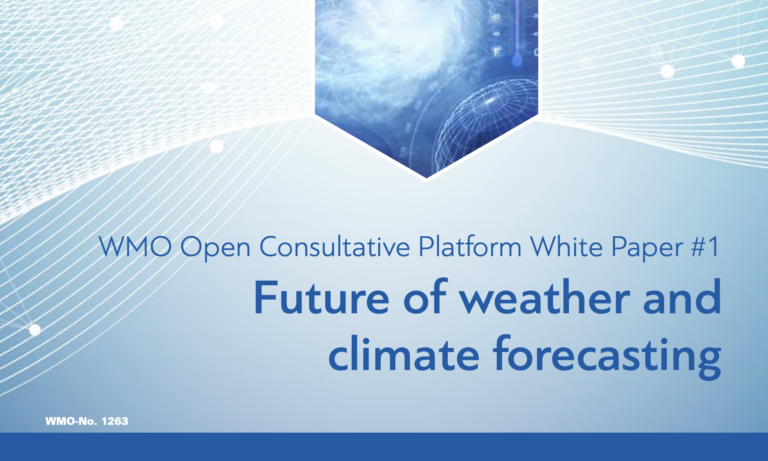The World Meteorological Organization (WMO) has released a new whitepaper which analyzes the opportunities present in the weather and climate forecasting sector, and sets directions and recommendations for the future.
The paper, the Future of Weather and Climate Forecasting, brings together advice from 30 leading experts from the research, operations and education fields. It traces the development of the weather enterprise and examines challenges and opportunities in the coming decade.
It examines three overarching components of the innovation cycle: infrastructure, research and development, and operation. “The whitepaper is based on the concept of a weather and climate innovation cycle which is determined to advance prediction services with the aim to improve public safety, quality of life, protect the environment, safeguard economic productivity,” said Dr Gilbert Brunet, chair of the WMO Scientific Advisory Panel and lead author and coordinator of the group of scientists and experts worldwide who contributed to the paper.
“This applies across all domains, weather, climate, oceans, hydrology and the land surface, and time span of decisions from minutes and hours, through to weeks, months and even years ahead,” he added.
WMO secretary-general professor Petteri Taalas, added, “Undoubtedly, the 2020s will bring significant changes to the weather, climate and water community: on the one hand through rapid advancement of science and technology, and on the other hand through a swiftly changing landscape of stakeholders with evolving capabilities and roles.”
The paper highlights the role the private sector and other stakeholders will have in the way climate forecasts are produced and used. According to the WMO, while NMHSs in all 193 WMO member states are still the public entities designated by governments to provide meteorological and related services, many other providers have entered the weather forecasting business in recent decades, including intergovernmental organizations like ECMWF, private sector companies and academic institutions.
“With appropriate investment in science and technology, and through better public-private engagement (PPE), the weather and climate enterprise will meet the increasing stakeholder and customer demands for tailored and seamless weather and climate forecasts. Such improvements will provide significant value to all nations. This paper makes the case that in many ways the PPE will accelerate the desired bridging of the capacity gap in weather and climate service needed for developing countries,” added Dr Brunet.
In June 2019, WMO launched the Open Consultative Platform (OCP), Partnership and Innovation for the Next Generation of Weather and Climate Intelligence, embracing a community-wide approach with participation of stakeholders from the public and private sectors, as well as academia and civil society. The new whitepaper is an output of this consultative platform.
To view the full whitepaper, click here.



